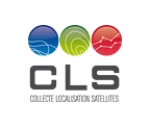Displaying items by tag: data processing
Conform (GIS data processing)
Conform is a software for cross-platform GIS viewer, editor and analysis tool.
GameSim, a video vame, simulation and GIS company, launches a new version of the Geospatial visualization product, Conform, which adds support for rendering LIDAR, point cloud data.
Conform is a powerful, easy-to-use tool for processing your GIS data. Whether you are a new or experienced GIS user, you will find Conform a useful tool to view, edit and analyze your data. Drag and drop folders of data into Conform and it will automatically load all supported GIS formats (e.g., Shapefiles, DTED, GeoTIFFs, LIDAR, etc.). Got a new batch of data that you need to take a look at? It's as simple as dragging the root folder into Conform and let it handle the rest.
Built for Speed
Using modern game engine rendering techniques, Conform will parse and display large amounts of data in moments. Many GIS tools require users to create separate projects when loading GIS data from various geographic locations and formats. This is not required in Conform. Users can load all of their data into a single project and use the intuitive map window to view all of their data across the globe.
Machinalis
Machinalis is a company dedicated to Research and Software development, being Python, Django and Agiles methodologies as the founding tools for our projects.
Our primary purpose is to change the role of Argentina in the worldwide IT Industry, transforming ourselves suppliers of High Added Value Solutions and Computer Science.
From within Machinalis and our experienced teams, we implement unique solutions through powerful and innovative tools and high standards of human resource, supported by standardized procedures of development, testing, implementation, monitoring and updates.
In Machinalis we are committed to making the client’s reach, objectives and expectations our primary goal. For this, our philosophy lies on inviting our clients to become active members in every step of the project, promoting long-term relationships.
We are the power button that moves your idea's wheels; we are... the missing piece.
Over the next 2 years, our goal is to become the Number 1 company in the provision of Python development from Latin America to the United States and Europe.
www.machinalis.com
NAPEOS software
NAPEOS, the NAvigation Package for Earth Observation Satellites, is a state of the art software system for GNSS data processing providing results with a very accuracy.
NAPEOS is developed and maintained by the European Space Operations Centre (ESOC) of the European Space Agency (ESA). The NAPEOS developments started around 1995. In 2003 the GNSS capabilties started to be added a project that was finished in 2007. After significant testing the navigation support office at ESOC (OPS-GN) started to use the NAPEOS software in January 2008 for all its IGS activities.
A significant number of companies and individuals have been involved in the development of the NAPEOS software. Of course the major part of the GNSS work has been done at the navigation support office (OPS-GN) at ESOC with a special mentioning for the company GMV. GMV has been responsible for major parts of the actual programming of the NAPEOS source code.
At OPS-GN, in ESOC, NAPEOS supports all the activities in the International GNSS Service (IGS), the International DORIS Service (IDS), the International Laser Ranging Service (ILRS), and other international scientific communities. NAPEOS is also used for the routine precise orbit determination (POD) of several LEO missions, e.g., the ESA ENVISAT mission.
NAPEOS allows fully automated, robust, and reliable GNSS processing at very high accuracy levels with processing efficiency.
Commercial services using NAPEOS are proposed by the company PosiTim.
François Arago Centre
The François Arago Centre is a project at the Astroparticule et Cosmologie (APC) laboratory and is supported by the IPGP within the Space Campus of Université Paris Denis-Diderot.
The centre was founded in 2010 with the goal to support space-based experiments facing the challenge of data treatment of steadily increasing and complex data sets. The centre provides services, such as computing facilities, data analysis, archiving, and distribution support, access to the heavy-duty computing facilities at CC-IN2P3, and office space to both, ground and space-based projects with strong french involvement. In the spirit of François Arago, who combined many fields of natural science in his work, enabled science by focusing attention on new technologies and supporting scientific development through communication between many disciplines, we want to serve the scientific community. The aim is to bring together scientists from different fields, data and software engineers, the scientific community and the general public in order to best exploit the data provided by todays state-of-the-art experiments.
CLS
CLS (Collect Localisation Satellites) is a CNES subsidiary which operates and/or processes data from more than 80 instruments on board nearly 40 satellites.
It has acquired expertise and experience during more than 20 years of operating satellite systems. CLS is a major contributor to global efforts in the field of environmental monitoring, sustainable management of marine resources and maritime safety. CLS solutions offer direct operational support to government, institutions and industries working in these areas.
Among other satellite systems, it is operating the Argos System.
ESA - ESRIN (European Space Agency)
The ESA Centre for Earth Observation (also known as ESRIN) located in Frascati, Italy, is one of the five specialised centres of the European Space Agency (ESA) located across Europe.
Located in Frascati, a small town 20 km south of Rome in Italy, ESRIN was established in 1966 and first began acquiring data from environmental satellites in the 1970s.
Earth observation: Earth Observation data has grown in importance as more and more international and national agencies recognise the many uses to which it can be put. Satellites for Earth observation keep a constant watch over the Earth and the data they provide help to safeguard the planet in which we live. Since 2004, ESRIN has been the headquarters for ESA's Earth Observation activities.
A multi-faceted centre: A number of other activities are also carried out at ESRIN, each of which is making an important contribution to ESA’s work. Among other things the establishment hosts the ESA development team for the Vega Launcher.






